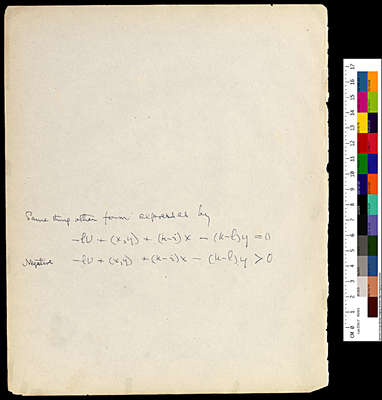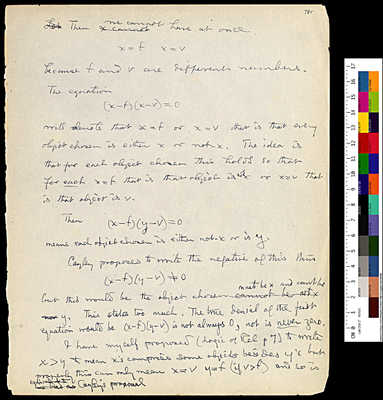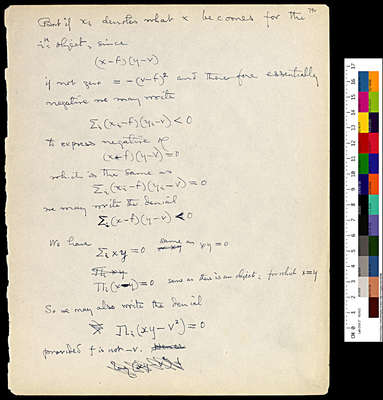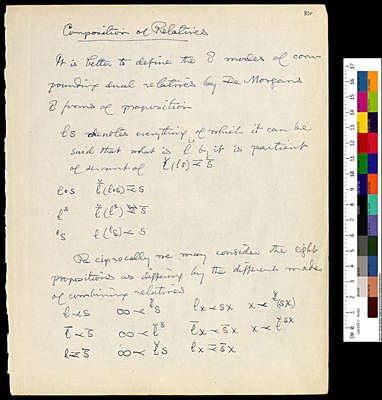Pages
6
Let Then x cannot we cannot have at once
x=f x=v
because f and v are different numbers. The equation
(x-f)(x-v)=0
will denote that x=f or x=v that is that every object chosen is either x or not-x. The idea is that for each object chosen this holds so that For each x=f that is that object is not x or x=v that is that object is v.
Then (x-f)(y-v)=0
means each object chosen is either not-x or is y. Cayley proposes to write the negative of this thus
(x-f)(y-v)≠0
but this would be the object chosen cannot be not x must be x and can't be (nor) y. This states too much. The true denial of the first equation would be (x-f)(y-v) is not always 0, not is never zero. I have myself proposed (Logic of Rel p 7) to write x>y to mean x's comprise some objects besides y's but properly this can only mean x=v y=f (if v>f) and so is ? bad as equivalent to Cayley's proposal




